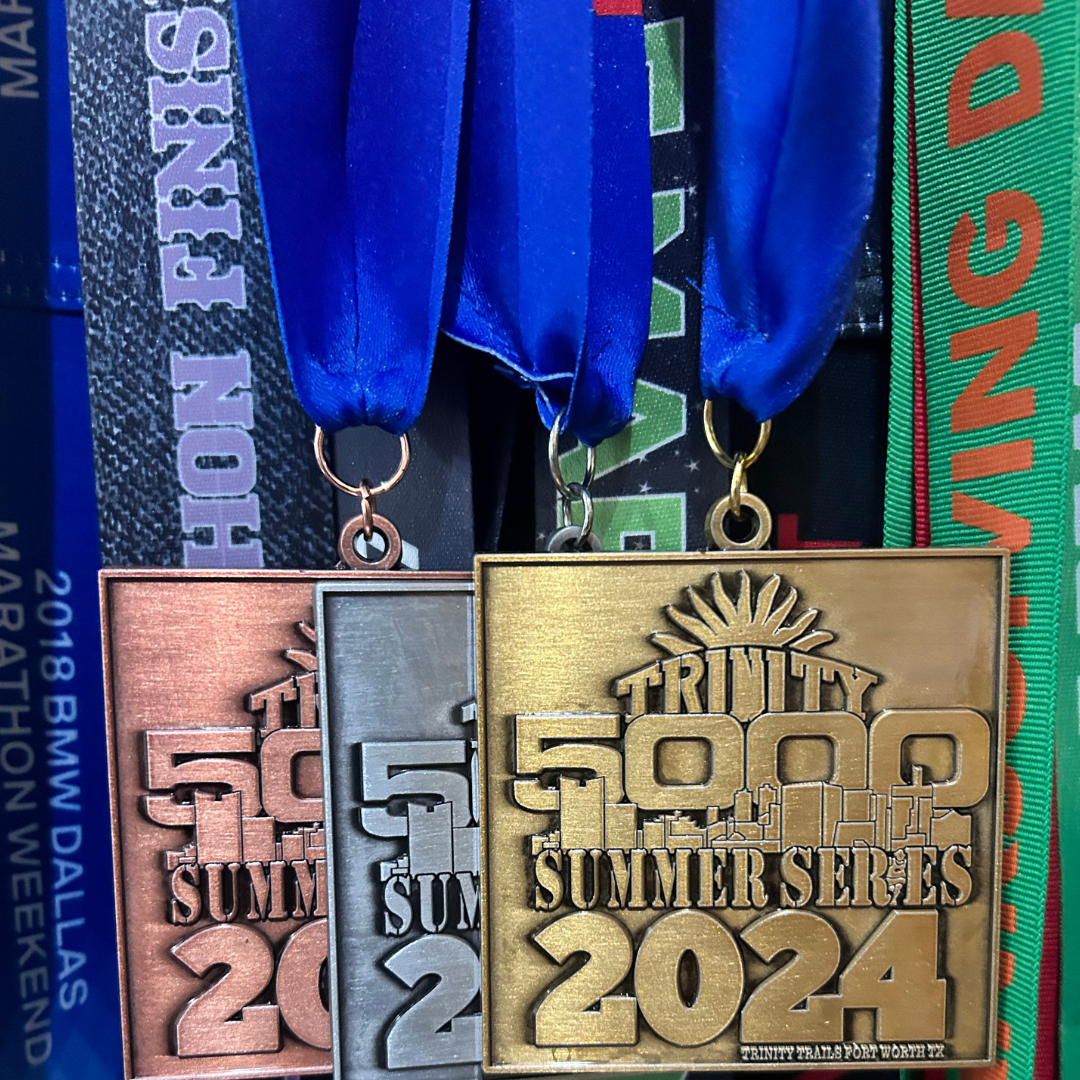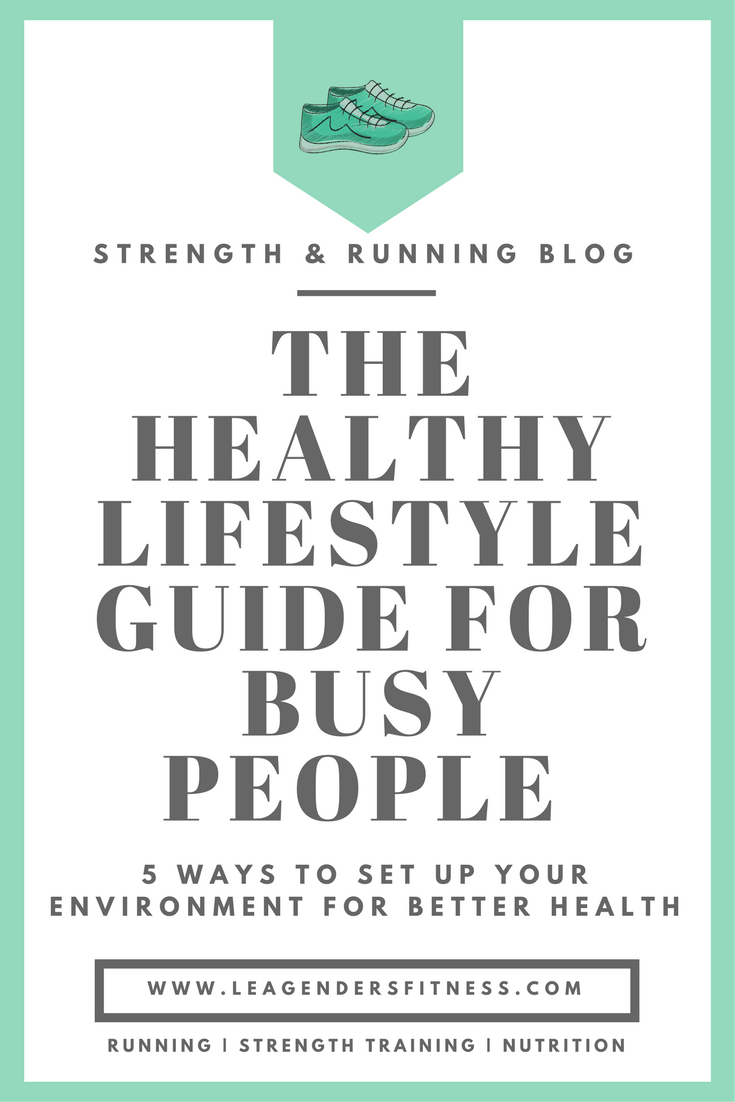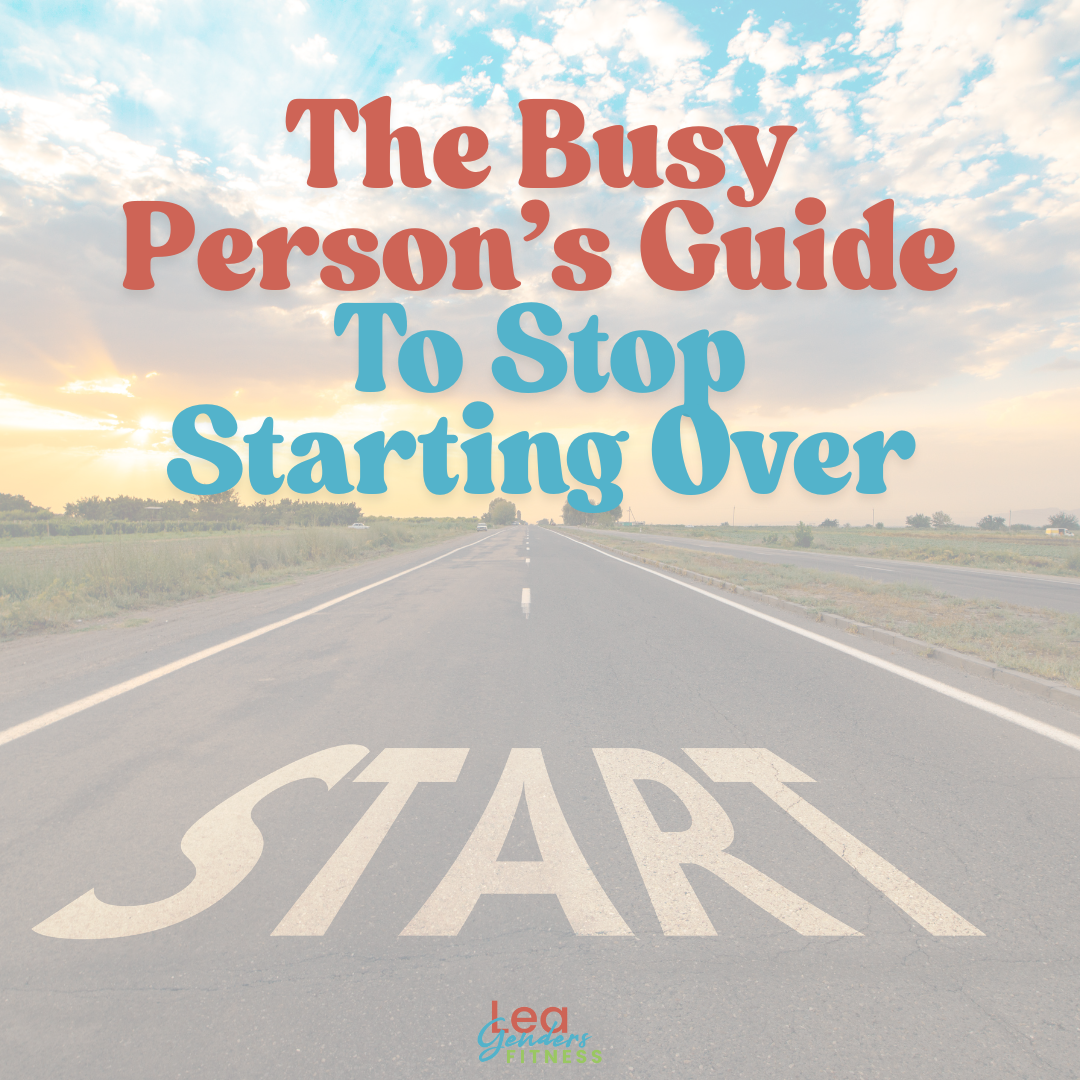Make the best of the holidays by writing end-of-year resolutions. Stay on track with healthy habits to help reduce stress, and feel your best this holiday season. A healthy lifestyle is not all-or-nothing. You can enjoy the holidays while staying on track with your health and fitness goals.
Running Form Tips For The New Runner & a Lesson on Being a Beginner
When I tell people that I am a running coach, sometimes they are quick to inform me they hate to run. I'll be the first to recommend that you not to do any exercise you hate, because you'll never stick to it. The best exercise is one you will actually do. Find a way to move your body that you love. However, I believe that a lot of people never give running a fair chance.
In the beginning, running can really suck. It's hard. It takes some time for your body to adapt. If you can get through the beginning-sucky part you may just find that you love running after all. It is hard for everyone at first. Of course you suck in the beginning, everyone sucks in the beginning. You have to practice. You have to run consistently and after a couple of months things will start to get better. Running can be enjoyable and you can actually get good at it.
Don't compare your start to someone else's middle.
Then I realized, damn, I need to take my own advice. Not about running, of course. You see, I recorded a quick video in the ShredShed this weekend. I always say I am a better writer than talker. I am just not very good on video. But why am I not very good on video? Because it is new to me. Because I don't do it often. Because I am not comfortable with it. Sound familiar new runners?
How do you get better at the things you suck at? You practice. You do them often. Just like that new runner that I coach to get out there and try again even when...especially when it doesn't feel good.
So in an effort to practice what I preach, I am going to record more videos and share them. It's not about being perfect and polished. (Ha, that may never happen. Have you met me?) It's just about doing the best I can and getting better over time. I did this one on proper running form. It's not perfect, but the information in the video is still valuable.
Watch my awkward reenactment of driving a car (yes, that is what that was supposed to be), my impression of an angry runner and my bad Phoebe Buffay running joke. Yes, I think i'm funny.
If you're anything like me and you still would rather read than watch a video, I'll cover my running form tips in writing too.
RUNNING FOR TIPS FOR NEW RUNNERS
SHOULDERS BACK AND DOWN
In this day and age we are constantly rounding our shoulders forward; when we text, when we type and when we drive our cars. I don't know about you, but I do those things almost all day long. When you run pay attention to your shoulders. Stand up straight, roll your shoulders back and down. This will help with proper form and running efficency.
ELBOWS CLOSE TO THE BODY
Don't run like Phoebe Buffay. Keep your arms and your elbows close to your sides as you swing your arms, don't allow them to flare out to the side. Your arms should move forward and backwards only, do not allow them to cross over the front of your body.
HANDS RELAXED
Run with your hands relaxed. Do not clench your fists like an angry runner. A good tip is to place your thumb and pointer fingers together like you are holding a potato chip between them. Keep it light, easy and relaxed.
NECK NEUTRAL | EYES FORWARD
Don't look down at your feet. Look straight ahead at where you are going, not at where you are right now. Keep your neck neutral.
Focus on one thing at a time. What can you improve today? Once you get these first four running form techniques mastered you will find that running is a little easier, that you are wasting less energy and running more efficiently.
Do you remember what it feels like to be a beginner at something? We all start somewhere. If we just strive to the best we can and keep moving forward (no matter how slowly), we will all be better for it.
Like this post? Yesterday was my birthday. I'll consider it a belated birthday gift if you share.
SHAKE IT UP WITH A PUMPKIN SPICE PROTEIN SHAKE & WORKOUT
The Healthy Lifestyle Guide for Busy People (aka Everyone)
Raise your hand if you're busy. Yep. That's just about everyone. We are all busy. If you want to live a healthier lifestyle, the good news is that you don't have get up at 5am to exercise for two hours a day and survive on kale and skinless chicken breast. You don't have to change your whole life to live healthier, rather you can find success by fitting healthier habits into your current (already busy) lifestyle.
5 WAYS TO SET UP YOUR ENVIRONMENT FOR BETTER HEALTH
Whether we like it or not our environment has an impact on our decisions. We can control our environment to a certain extent. We can stay out of bars if we don't want to drink alcohol. We can clean out our cabinets so that only healthy foods are within arm's reach. We can try to spend more time with friends who want to eat healthy and exercise with us.
However, there are always going to be factors that we can't control. Our husbands and kids may not want to eat healthier and beg us to order pizza. We may be chained to a desk eight hours a day while our co-workers try to push us to have that piece of cake. ("Oh, come on, you know you're just going to run it off later anyway"). The healthiest choice in the vending machine is organic Doritos. Spoiler alert: not healthy.
I am not suggesting that you get a divorce, quit your job and give away your kids. We can't always control our environment (and we happen to love those darn kids) but we can learn to navigate it to set ourselves up for better health. It's not about being perfect all the time. That would be impossible. It's doing the best we can in every situation in the life we are already living.
1. ATTACK THE SNACKS
The best defense against poor choices is planning ahead. When you're starving and rushed, you're more likely to hit the drive through, vending machine or deep dive into the ice-cream aisle. I try to keep healthy snacks close at hand. If I always have nuts, seeds, a piece of fruit or a protein shake nearby, I'm less likely to make poor choices because I am hangry.
#TeakFurniture HANGRY Definition Print - UNFRAMED | Kitchen Art | Art Print | Home Decor | Kitchen Wall Art | Office Art | Funny Art | Fuzz… pic.twitter.com/E7XrldY4P6
— John Teak (@finestteak) September 15, 2017
2. THE IDEAL MEAL
How and where you eat your meals has an impact. We usually eat the amount of food that is served to us (or we serve ourselves). I am always reminding hubby of proper serving sizes because he thinks nothing of filling half my plate with buttery sweet potatoes. While I love buttery sweet potatoes, I don't need a half plate of them. I use Precision Nutrition's cupped hand portion serving size as a general guide. Not complaining about hubby cooking and serving dinner though.
If we use smaller plates, we tend to put less food on them and naturally control our serving size. If we finish eating, then wait 15 minutes or so and still feel hungry, we can always eat more. The idea is that we are not mindlessly eating just because it's there. If we serve food on smaller plates, eat slowly and stop when about 80% full (this takes practice) we solve most of our food portion issues.
Sit at an actual table (not of the coffee variety), turn off the TV and put away the phones so you can savor and enjoy your meal. If you work outside of the home during the day, pack a lunch and eat it away from your desk. Sometimes just the act of slowing down and paying attention can yield big results.
3. YOUR KITCHEN MISSION
Clean out your cabinets and remove any foods you have trouble maintaining control over. I usually have to keep salt and vinegar potato chips out of my house. It's not to say you have to get rid of all unhealthy foods, because there is definitely room for treats in your diet. Only keep the foods around that fit within your goals. If you have to get dressed, put on shoes, find your purse, comb your hair, get in your car and drive to the store to buy it, you're less likely to indulge in it when you have a craving a 9pm. Just make it a little harder on yourself to get those types of foods. You can have them when you really want them, just don't make it so easy on yourself.
Sign up for a CSA box so that fresh, healthy produce and/or meat is delivered to you. In Texas (and other states, I hear) we have Bountiful Baskets, a co-op where you can pick-up fresh fruits and veggies for $15 a week that have a retail value of around $50.
Spend time on the weekends prepping and cutting meals and veggies. If necessary, buy pre-cut veggies. If you don't have time to meal prep, sign up for a healthy meal delivery service.
4.PRACTICE BEING ACTIVE
No matter how much or how little you workout each week, you can set your environment up to get more activity in throughout the day. Remember, it all counts. It doesn't have to be structured exercise to have an impact.
Park your car in the farthest spot away from the entrance of school, work and the grocery store so that you have to walk. Ride your bike or walk instead of driving to places that are nearby.
Do squats while you brush your teeth or incline pushups against the kitchen counter while waiting for the microwave to ding. Do a four minute tabata workout when you get out of bed in the morning to kick your day off on the right foot. It all counts. I promise.
5. FIND FIT-MINDED FRIENDS
Join a run club or active social group to find a workout buddy. Find like-minded people who are interested in their health, fitness, and nutrition. Ever hear of November Project? Just show up. Organize your social events around being active; go for a walk, run or hike instead of meeting up at a restaurant or bar. Find friends to sign up for an obstacle race or fun 5K with you. Join an adult soccer league. Whatever floats your boat. Hey, good idea. Go swimming off of a boat! When exercise hour becomes social hour to catch up with friends, the more likely you'll do it.
A four-legged furry fit friend can be the best kind. Get a dog that needs a daily walk. Can't have a dog? Borrow from a neighbor or volunteer to run with shelter dogs. I guarantee they will love you for it.
You don't have to overhaul your whole life to live healthier. Use this healthy lifestyle guide to help you incorporate new healthy habits into your busy day. You're never going to be less busy, start making small changes today.
Like this post? An angel earns its wings every time you share.
TRAIN SLOW TO RUN FAST: WHY SLOWING DOWN CAN HELP YOU SPEED UP ON RACE DAY
Train slow to run fast. Wait. What? That sounds counter-intuitive.
A mistake a lot of runners make is that they run too often at a pace that is too hard. While fast-paced runs have their place in your training, if you run at a hard (tempo) pace every day, it could be holding you back from improving. If you add additional speed work on top of daily tempo runs, it's a recipe for a running disaster: injury.
SLOW AND LOW THAT IS THE TEMPO
If you run your slow runs too fast your body will not be properly recovered and ready to do the speed work at your full potential. You'll end up limiting improvements by staying stuck in the middle with your slow runs too fast and your fast runs too slow.
Most coaches recommend aiming for about 80% slow runs and 20% fast runs in your training week. That means most of the time you should be running slow. I know we all want to post our speedy times on Instagram every day, but the slow runs strengthen your base so that you are ready and able to perform the fast runs at your full ability.
It takes a great deal of restraint to run slow. While you may worry that people are judging you for your snail-like pace on those slow run days, let me assure you that no one cares about your pace as much as you do. Most people are just impressed that you are out there at all.
Slow runs should be about one to two minutes slower than your race goal pace. Slow runs should be performed at a conversational pace, which means just what it sound like: You can hold a conversation with your running buddy without gasping for air between words and sentences. My running partner has four legs and he doesn't talk back, but you get the point. Get out there and actually enjoy your runs. You shouldn't be pushing yourself to the limit on every single run.
THE BENEFITS OF RUNNING SLOW
Running slow may not make you an instagram star, but there are benefits that far outweigh a few new likes on your Strava image. Running slow helps build your tendons, ligaments and joints to adapt to the stresses of running. This helps you stay injury-free. Slow running builds your aerobic base and increases your glycogen (carbohydrates) stores which you will need if you want to run long(er) distances. Slow running allows you to put in more miles each week while avoiding burnout or injury from overtraining.
VARY YOUR PACES
I am not advocating that you should always run slow. Remember the 80/20 rule. 80% slow but the 20% fast is important too. If you always run slow, your body will adapt and you will become really efficient at running slow. If you want to run faster, first build your aerobic base by running slow, then most athletes will thrive on just one or two speed sessions per week. It's about finding the balance between work and recovery. Everyone is a little bit different, you may have to experiment to find what works best for you. Listen to you body.
RECOVER FROM SPEED WORK
Without proper recovery you can't keep improving. You get stronger and faster during rest, not during the workout. If you push your pace on every run and don't rest enough for recovery you will not allow your body to get stronger and faster. Resting and slow running are not signs of laziness, they are important components of a well-rounded training plan. Got it? Good.
Next time you hit the road for a run, make a conscious effort to slow down. Go slower than you need. Sing the Beastie Boys in your head (or out loud for all I care) "Slow and low that is the tempo". Do the talk test. Can you hold a conversation without taking deep breaths for air? Enjoy your run. This is supposed to be fun.
Like this post? I jump for joy when you share with your friends and followers.

































A lot of nutrition guides for half marathon training are overly complicated and aimed at elite athletes, which can be intimidating for the average runner. This blog post is about taking the pressure off by treating your fueling as a personal, no-math-required experiment throughout your 12-to-16-week training cycle. As a health coach and personal trainer, my goal is to give you simple, straightforward guidelines so you can figure out what works best for your body, ensuring you have the energy needed to train well, recover fully, and cross the finish line feeling strong.